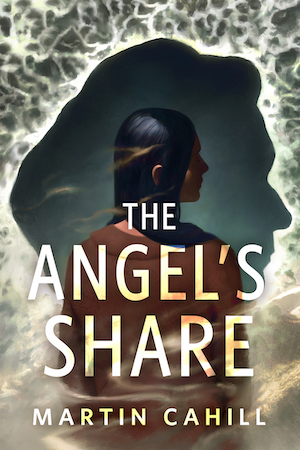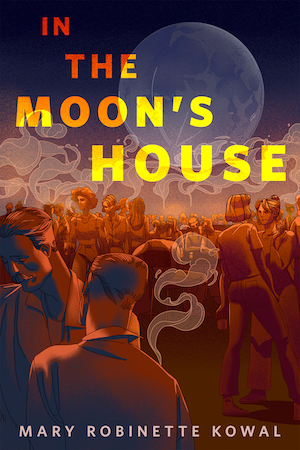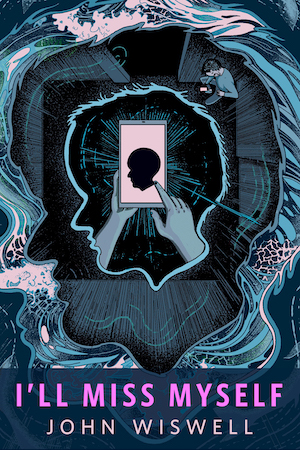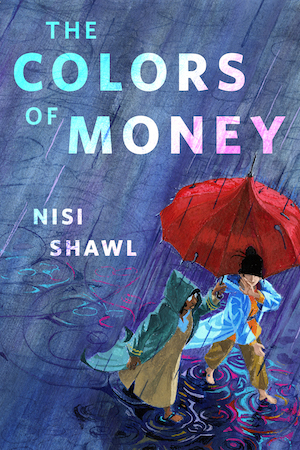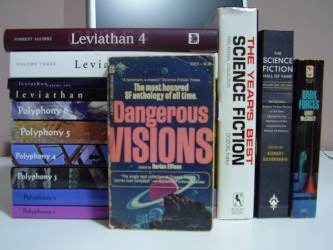This time I’m sticking my neck out. I don’t normally do this. I normally keep my opinions to myself. My problem is that I know too many people and, I’m a little ashamed to admit, I have an almost overwhelming desire for people to like me, so I don’t want to offend someone that I know. And as an editor, I view everyone I don’t know as a potential future collaborator.
But now I want to give my opinion. I want to open myself up to criticism. I know that people will have problems with this list. That’s ok. There’s no way to make a top ten list without leaving off someone’s favorite or potentially overlooking something. The photo to the left tips my hand heavily, but that’s ok, too. (And yes, I did not have copies of all the titles in the list at hand, so there are fewer than ten titles in the photo.)
I’ll be the first to admit that prior to the 1960s, I’m just not well read at all, and I’m best read from the 1980s forward. Does that disqualify me from making this list? Of course not. It just gives the rest of you more fuel for comments.
That said, here is my take on the “Ten Most Influential SF/F/H Anthologies/Anthology Series”:
The Ten Most Influential Science Fiction & Fantasy Anthology/Anthology Series
10. POLYPHONY edited by Deborah Layne & Jay Lake (Vols 1 – 6)/Forrest Aguirre (Vol 7 and beyond)
This is potentially my most controversial pick. It’s the most recent of everything on the list, so a lot of people will say that we can’t interpret its influence on the field. But I think differently. The series started in 2002, and has had a volume come out, on average, each year. With contributors ranging from Carol Emshwiller and Barry N. Malzberg to Lucius Shepard and Howard Waldrop to Jeff VanderMeer and Robert Reed, you’ve certainly got something happening to which writers are paying attention. Additionally, I posit that Polyphony is the beginning of a renaissance of the anthology series from decades past. When I see new series like Eclipse, Interfictions, or the Solaris Book of New Science Fiction, I can’t help but think of Polyphony as the starting point for these newer anthology series. The publisher is on hiatus for 2009, putting volume 7 in limbo, but the contributors decided to leave their stories with the publisher and wait for the new volume to come out next year. I don’t know about you, but that says a lot to me about what authors think of the series: they want their work to be seen in it.
9. LEVIATHAN edited by Jeff VanderMeer & Luke O’Grady (Vol 1)/Rose Secrest (Vol 2)/Forrest Aguirre (vols 3 & 4)
You could almost make the argument that Leviathan deserves to be considered the forerunner on the resurgence in anthology series, and if main editor VanderMeer wasn’t so busy writing and publishing his own work, we very well may have seen volumes come out more often than they have. Then again, it might just take the amount time they have for VanderMeer to be happy with their contents. With four volumes since 1996, this series is not about putting out a new volume every year, but rather about getting together the material for a quality anthology. Most people learned of the series with the publication of volume three, which ended up sending people out looking for volumes one and two. In addition to being a talented writer, VanderMeer has proven himself to be an innovative editor, with the Leviathan series giving him the most room to stretch and show off his editorial muscles. The Leviathan anthology series also gives us the progenesis of the New Weird movement, which includes writers like Jeff VanderMeer and China Mieville, and is stylistically akin to the stories published in Leviathan.
8. DARK FORCES edited by Kirby McCauley
McCauley wanted to publish a horror/supernatural answer to Harlan Ellison’s Dangerous Visions. The big story—both in name recognition and in actual size—is the novel-length piece “The Mist” from Stephen King. However, I think King’s stature has over-shadowed the quality of the rest of the anthology.This anthology inspired a new generation of writers, including people like Clive Barker, to push themselves past taboos and into new territory. If you like dark fiction and someone missed this anthology, you NEED to go back and find a copy.
7. THE SCIENCE FICTION HALL OF FAME Vol 1, 1929-1964 edited by Robert Silverberg
The contents of this anthology were voted on by the members of the Science Fiction Writers of America (SFWA) in 1965. The intention was to celebrate the great work that had occurred in the field prior to the creation of SFWA. The book was first published in 1970 and re-issued by Tor in 2003 (hardcover) and 2005 (trade paperback). Take a quick peek at the table of contents here, and then come back and tell me that’s not a great collection. The 15 stories that received the most votes automatically were put in the volume and then Silverberg selected additional stories from the next 15 top vote getters to make 26 stories in all. Just like Dark Forces, if you like science fiction, and somehow missed this book, it’s a great way to add some fantastic stories to your library.
6. THE YEAR’S BEST SCIENCE FICTION VOLUME 1 edited by Gardner Dozois
This isn’t the first year’s best science fiction anthology. There were certainly predecessors to it. And as most of you know, it’s not currently the only year’s best book out there. I single it out based on the superior quality of its table of contents, and the fact that its success has been parlayed into the current spate of year’s best books. The first volume is a near-prefect snapshot of what was going at the time in science fiction. You clearly see Dozois’ hand here with the number of cyberpunk authors (or at least those who were associated with cyberpunk) in the table of contents: Sterling, Watson, and Cadigan among others. But a modern reader looking over this list, compiled 25 years ago, should be able to recognize every name on it (with poor Rand B. Lee being the one possible exception). I don’t know if that’s true of every volume since then, but this series certainly got off to an auspicious start. And given that we have seen 25 volumes of this year’s best, Dozois is doing something right.
5. NEW DIMENSIONS edited by Robert Silverberg
For me, one of the big things about New Dimensions is its focus on female writers. Whether Silverberg was conscious of this effort (i.e., seeking out and soliciting female writers for work) or it was a byproduct of the surge of women writing SF at the time is irrelevant. The series and its stories won three Hugo awards, one Nebula award, and one Seiun award. Silverberg did actively seek to publish varied authors in the series, eschewing the somewhat typical tendency to use the same authors over and over that other anthology series at the time did. True, Silverberg did publish multiple stories by some authors; he just didn’t solicit work from a stable of writers. The series featured stories from Isaac Asimov, Harlan Ellison, Gregory Benford, Orson Scott Card, and Vonda McIntyre among others.
4. UNIVERSE edited by Terry Carr
Universe published 17 volumes in all, with the anthology and its stories winning six LOCUS awards, five Nebulas, one Hugo, and one World Fantasy award over its run. If you’re not swayed by the award accolades, the series published work by Kim Stanley Robinson, Harlan Ellison, Fritz Leiber, Gene Wolfe, and others. It also saw early publications—and sometimes first publications—from many currently established writers such as Molly Gloss, Michael Cassutt, George Alec Effinger, Lucius Shepard, and Robert Reed. The series ceased its run with the death of editor Terry Carr in 1987. Universe had no over-arching theme, or particular editorial bent; Carr just published the best stuff that was sent his way, and he published quite a bit of great stuff.
3. ORBIT edited by Damon Knight
Orbit published 18 volumes (including one double volume, but excluding a best of volume) in its run, with stories winning four Nebula awards. Orbit was quickly considered the ‘place to be’ for science fiction writers of the time. For many writers, Orbit was a place they could stretch out and try new things. You’d see work from Gene Wolfe, R. A. Lafferty, and Kate Wilhelm. In fact, these three writers were in almost every volume of Orbit; Lafferty’s story collection—Lafferty in Orbit—is, you guessed it, a collection of his stories from the anthology series. You also got work from Robert Silverberg, Vernor Vinge, Harlan Ellison, Thomas Disch, Brian W. Aldiss, Gardner Dozois, and others. Orbit definitely inspired several other anthologies/anthology series including New Dimensions and Universe.
2. NEW WORLDS QUARTERLY edited by Michael Moorcock
It’s perhaps a little disingenuous to include New Worlds in this list, as it gained its notoriety and prominence as a magazine rather than as the anthology series it became. And in truth, a lot of the inspirational work from New Worlds, particularly when Michael Moorcock took over as editor in 1963, was published in its magazine iteration. Nonetheless, I am putting this in my list since I think both the magazine and its subsequent anthology series important enough to warrant it. The big concept here was that the stories had to have literary merit. Moorcock pushed the writers to be as different from traditional science fiction as possible. New Worlds was not afraid of controversy. It also ushered in the literary movement known as the New Wave. Like many other literary movements, the New Wave disdained their designation. In addition to writers like J. G. Ballard, Michael Moorock, Norman Spinrad, and Brian Aldiss, you can find a more detailed list of New Wave writers here. Under Moorcock’s stewardship, New Worlds was hugely influential on writers of the time. Writers no longer felt they needed to rein in their literary tendencies.
1. DANGEROUS VISIONS edited by Harlan Ellison
It’s hard to find a single volume of science fiction that won as many awards: two Nebulas, two Hugos, a special Worldcon award, and the LOCUS all-time poll for anthology. There were also an additional three Hugo and two Nebula nominations from this anthology. Of course, that’s tempered a bit when you consider all the nominations and wins went to six out of 32 stories, with the Fritz Leiber novelette winning both the Hugo and the Nebula. Still, that’s an impressive tally. I think this speaks more to the influence the anthology had rather than the staying power of the stories. Reading it today, some of the stories almost seem trite and many more do not hold up to the test of time. I think this is where it’s true power lies. This anthology changed the way that people read and wrote science fiction; it changed the way that people thought about science fiction. It was the first time that there were extended introductions (and sometimes afterwords) to each story. These days you’re hard-pressed to put together an anthology without writing a small expository piece for each story. I know that many people feel that this anthology was the death knell of the New Wave, but all movements have to come to an end at some time, so why not a glorious end like this? It certainly give a larger voice to the writing that was happening in many other venues. For that, I have to place Dangerous Visions at the top of my list.
Honorable Mentions: Star Science Fiction edited by Frederik Pohl, New Voices (John W. Campbell nominees), Starlight edited by Patrick Nielsen Hayden, The Science Fiction Century edited by David G. Hartwell, The Year’s Best Fantasy & Horror edited by Ellen Datlow & Terri Windling/Gavin Grant & Kelly Link, Wild Cards edited by George R. R. Martin, Borderlands edited by Terri Windling et al., and The Prentice Hall Anthology of Science Fiction and Fantasy edited by Garyn G. Roberts. I’m not sure what it says that the majority of my choices were anthologies that were edited by writers as opposed to those put together by people who work primarily as editors. It certainly doesn’t reflect the esteem in which I hold my editorial colleagues.
Thanks to Rich Horton, and his article “The Original Anthology Series in Science Fiction” on SF Site as well as the LOCUS Index of SF Awards without which I would have never been able to write this post. I also solicited the opinion of many esteemed editors while writing this post, and I will be creating a follow-up post of over-looked anthologies.


